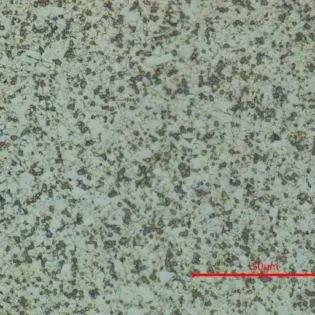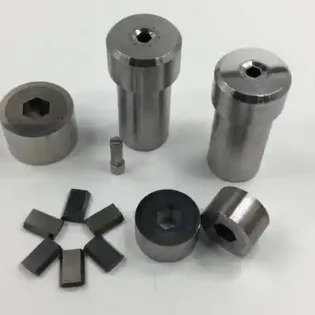First of all, there is an official definition: residual stress is that the workpiece will be affected by various process factors in the manufacturing process; When these factors disappear, if the above effects and influences on the component can not disappear completely, and some of them remain in the component, then the residual effect and influence is residual stress.
A little dizzy? Let’s talk about it in a popular way. For example, a person was very thin before and bought a pair of L-size jeans. However, after a year, he became very fat. When he wore these jeans again, he would feel that his trousers were too tight because he was fat and his trousers didn’t change. At this time, there was a strong force between his body and his trousers. If he used too much force, it was easy to tear them, This destructive force is the effect of residual stress. From the perspective of energy work, when the external force causes the plastic deformation of the object, it will cause the internal deformation of the object, thus accumulating part of the energy; When the external force is eliminated, the energy with uneven internal stress distribution will be released. If the brittleness of the object is low, it will deform slowly, and if the brittleness is high, it will form cracks.
Residual stress is very common in mechanical manufacturing, and it often occurs in every process. However, in essence, the causes of residual stress can be divided into three categories
The first type is non-uniform plastic deformation;
The second type is uneven temperature change;
The third type is inhomogeneous phase transition.
The harm of residual stress can be seen from the classification of residual stress. The residual stress can cause the slow deformation of the object, lead to the change of the size of the object, lead to the unqualified size of the machined workpiece, lead to the loss of accuracy of the whole instrument and become a scrap in the production of the instrument, and the casting and forging workpieces appear cracks or even fracture. At the same time, the fatigue strength, stress corrosion resistance, the mechanical properties of the whole instrument are analyzed Dimensional stability and service life also have a very important impact.
During the cooling process, the residual thermal stress is produced due to the uneven cooling caused by the unreasonable process, which leads to the fracture of the casting
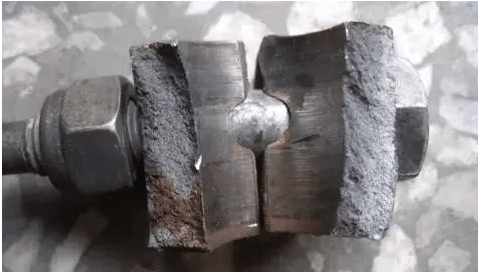
Fig. 1 fracture of casting during cooling
During the quenching process of heat treatment, the martensitic transformation of undercooled austenite is easy to cause material fracture
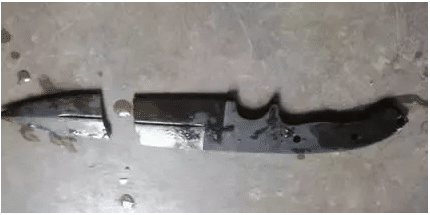
Fig. 2 metal fracture during quenching
Measurement of residual stress the measurement of residual stress can be divided into mechanical method, chemical method and X-ray method.
Mechanical method
The most common mechanical method is drilling method (also known as blind hole method). In operation, a section of bar (or pipe) whose length is three times of its diameter is cut from the object, and a through hole is drilled in the center. Then a thin layer of metal is removed from the inside by the bore rod or drill bit, and about 5% of the cross-sectional area is removed each time. After the removal, the elongation of the sample length and the elongation of the diameter are measured.
The relationship curve between these values and borehole section area is drawn, and the derivative of any point on the curve is obtained by drawing method to characterize the change rate of elongation and borehole section, and then the residual stress value can be obtained by substituting the corresponding stress formula.
Chemical method
There are two ideas of chemical law. One idea is to invade the sample into a suitable solution, measure the time from the beginning of corrosion to the discovery of cracks, and judge the residual stress according to the time. The solution used can be mercury and mercury containing salts for tin bronze, and weak alkali and nitrate for steel; Another idea is to immerse the sample in a suitable solution and weigh it at intervals. In this way, we can get a relationship curve between weight reduction and time, and compare it with the standard curve to determine the size of residual stress. The higher the position of the obtained curve is than the standard curve, the greater the residual stress in the object.
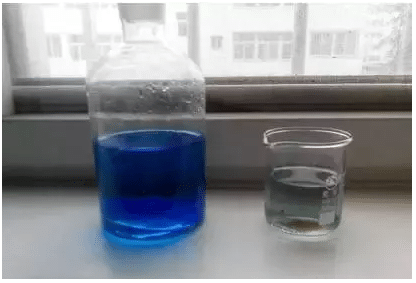
Figure 3 Immersion of metal to be tested by chemical method
X-ray method can use X-ray to penetrate metal parts, and Laue method can qualitatively determine the residual stress by interfering with the change of spot shape.
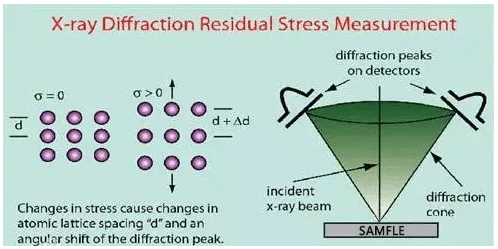
Figure 4 Principle of X-ray method
When there is no residual stress, the interference spots are distributed as dots. When there is residual stress, the interference spots elongate and show “Star” shape.

(a) There is no residual stress( b) Residual stress exists
Figure 5 Measurement results of Laue method
Debye method can measure the residual stress quantitatively, which can be determined according to the position, width and intensity of the diffraction line on Debye diagram.
To sum up, mechanical method and chemical method are destructive testing methods, which require local sampling of the object to be tested, and the damage is irreversible after testing; X-ray method is a non-destructive testing method, which can maintain the integrity of the object. Mechanical method can accurately determine the size and distribution of residual stress, which is generally suitable for bar or tube shaped objects; Chemical method is suitable for objects of wire and sheet type, but chemical method can only make qualitative judgment, it is difficult to achieve quantitative description; Although X-ray method is a “non-destructive” method, it is only suitable for some materials that can give clear and sharp diffraction lines, and because of the small projection ability of X-ray, it can only detect the part of the object close to the surface.
The elimination of residual stress since there are so many hazards of residual stress, the effective elimination method is very necessary. There are four elimination methods: heat treatment, static load pressurization, vibration aging and mechanical treatment.
Heat treatment
Heat treatment is to use the thermal relaxation effect of residual stress to eliminate or reduce residual stress. Generally, annealing and tempering are used.
Static load pressurization is to adjust the residual stress of workpiece by plastic deformation of whole or part or even micro area. For example, large pressure vessels, after welding, are pressurized inside, which is called “bulging”, so that the welding joint has a small amount of plastic deformation, so as to reduce the welding residual stress.

Figure 6 Large oil tank after bulging treatment
VSR is called vibration stress relief in English. Vibratory stress relief (VSR) is a common method to eliminate the internal residual stress of engineering materials. Through vibration, when the vector sum of the internal residual stress and the additional vibration stress of the workpiece exceeds the yield strength of the material, a small amount of plastic deformation occurs in the material, so that the internal stress of the material can be relaxed and reduced.

Figure 7 strain quantifiable VSR system
Mechanical treatment is to reduce the residual stress by using the method of small plastic deformation on the surface of the object, including parts colliding with each other, surface rolling, surface drawing and surface sizing and fine pressing in the mold. For example, one of the advantages of ironing is the elimination of residual stress.

